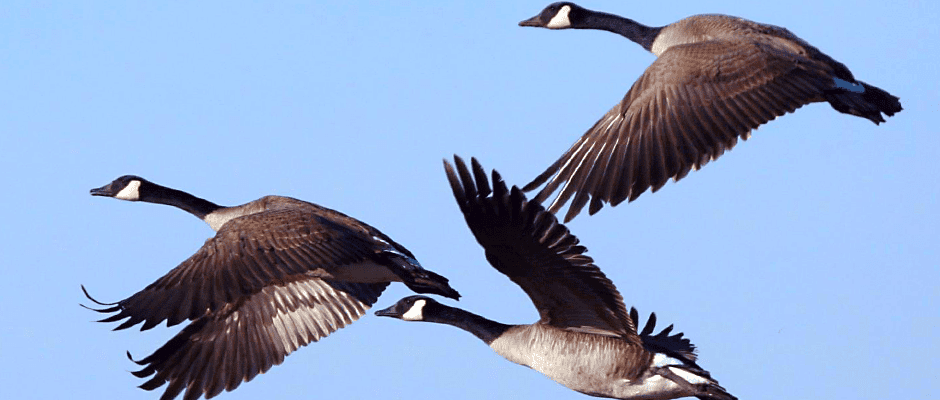Share this article
Why Canada geese are calling a bustling city home
You may have seen them around your job, your house or the nearby lake. Canada geese (Branta canadensis) have established resident populations in urban areas across the country. That includes Chicago, where researchers recently wanted to find out why these geese would choose to settle in the city.
In a study published in The Condor: Ornithological Applications, researchers recently captured and tracked Canada geese wintering in Chicago to determine where they go for food, where they go when temperatures drop and where they overall choose to establish their territory.
Some of their findings surprised them. For example, some of the geese were traveling as far north as the Hudson Bay to breed or molt, and birds that stayed in the cities faced less mortality than geese that migrated.
“We have a very large population in the Chicago area,” said TWS member Heath Hagy, a wildlife biologist with the National Wildlife Refuge System of the U.S. Fish and Wildlife Service and coauthor of the study. “The geese can create issues for people such as leaving droppings by water and in green spaces, becoming territorial when they nest in the summer and even colliding with vehicles.”
The research team, led by University of Illinois graduate student Brett Dorak, baited Canada geese with Honey Nut Cheerios and Wonder Bread and then cast a net to catch them. They also used techniques such as rocket netting, nets launched by small charges over the birds, and animal capture guns, which resemble flashlights but shoot nets up to 30 feet to capture the birds.
After taking morphological measurements and assessing the general condition of 41 geese captured in the greater Chicago metropolitan area between 2014 and 2016, they attached cellular transmitters to the birds to track their movements.
Hagy and his colleagues hypothesized that the geese were taking trips outside the city to feed on waste grain in agricultural fields, but their data showed that wasn’t the case. “Most stayed in the city and didn’t stray too far from the parks and other urban areas or rooftops where they were captured,” he said. “So they’re finding food somewhere in Chicago.” Of the geese staying in Chicago throughout winter, many used rooftops, Hagy said.
The team’s data also surprisingly revealed that about half of the Chicago geese migrated north to areas such as the Hudson Bay to breed or molt. “These birds often disappeared out of cellphone coverage for four or five months,” he said. “Their transmitters would store their location data, and it became available when they came back.”
Of the birds that remained in the city for the winter, there were no mortalities. However, for the birds that left, survival decreased by 50 percent, primarily due to hunting, Hagy said.
The data also showed that while the geese used a variety of urban habitats, when it got cold outside, they preferred deep water and rivers over green spaces like parks.
From this research, Hagy said, managers can determine when to deploy harassment techniques to keep out troublesome Canada geese. When winter temperatures dropped below freezing, the team found, the geese left their main habitat of green space to go to deep water or ponds.
“We can focus harassment during those times when they’re moving around a lot to potentially push geese outside of urban areas,” he said.
Header Image: Recent research shows safety from hunters, rather than food, drives Canada geese to the city of Chicago. ©M. Horath








